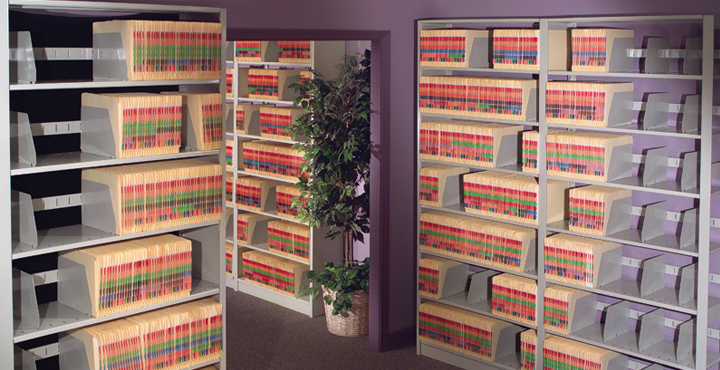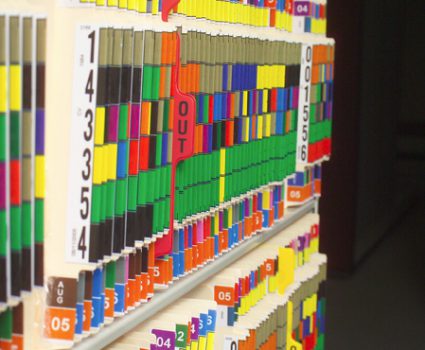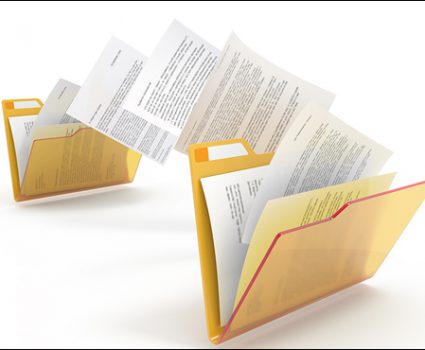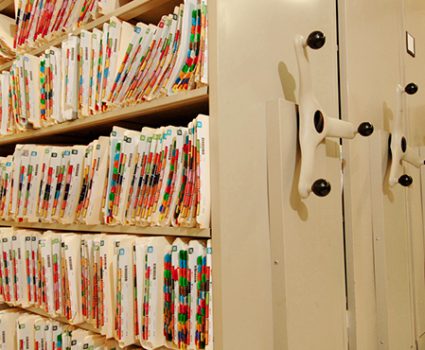
How to Plan a Centralized File Collection – Part 2
In last week’s blog post, we kicked off a three-part series on centralizing physical records. In part one, we learned that you need to have a clear understanding of existing practices before you can develop a standard filing system for the centralized records room.
This week we focus on how storage and space planning can save money and make the most of the available space in your centralized file room.
Here are the key things to consider:
Vertical Filing vs. Lateral Filing
Many traditional, older filing systems use vertical filing that arranges files from front to back in a pull-out drawer. This is a very inefficient method of storage! A four-foot deep vertical filing cabinet requires an additional four feet of space in front of the cabinet to accommodate the pull-out. On the other hand, a lateral filing system arranges files from left to right. This reduces the required pull-out space to no more than the length of single file folder.
Location of Folder Tabs
End tab file folders are designed with the labels on the side, in contrast to traditional folders that feature the tab on the top. The end tab design is a great space saver. Because the folder label can be read from the side, it eliminates the need for pull out drawers and the cumbersome hanging systems that take up so much space in traditional filing systems.
The end tab configuration also eliminates the need for clearance space above the folder. This allows you to stack more rows of shelving within a given amount of floor space.
Finally, since these folders do not need to be eye level for the labels to be visible, end tab folders can be stored in at a higher position while still keeping label information perfectly readable. Combining end tab folders with color-coded labeling can allow as many as seven usable filing rows, increasing the utilization of available floor space by up to 140 percent.
Mobile vs. Stationary Shelving
Mobile shelving systems are on rollers and tracks and greatly increase the use of space in a centralized collection. Instead of having one aisle between every row of shelving, a mobile solution needs just one aisle that users can move in order to access files in a given row. Fewer aisles means more space for records – up to twice as many, depending on your situation and the type of mobile shelving system you choose.
Next week, we will conclude this series with a post on how to manage file access in a centralized collection.
Next Steps
- Don’t wait for next week’s post. Download our white paper now: Strategies in Centralized Filing.
- Get one of our experts to help you with your space planning and storage design.





